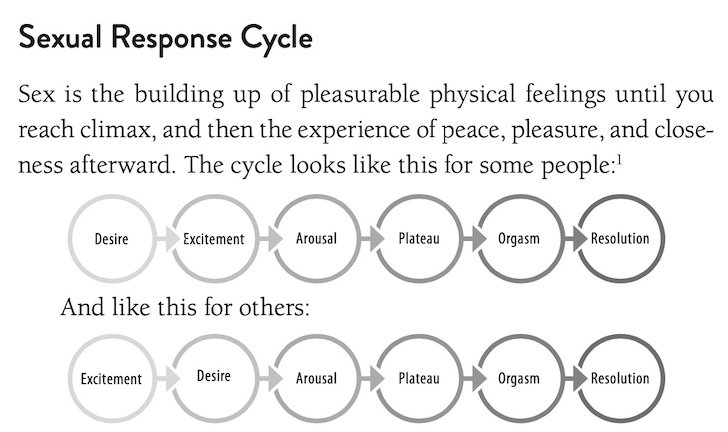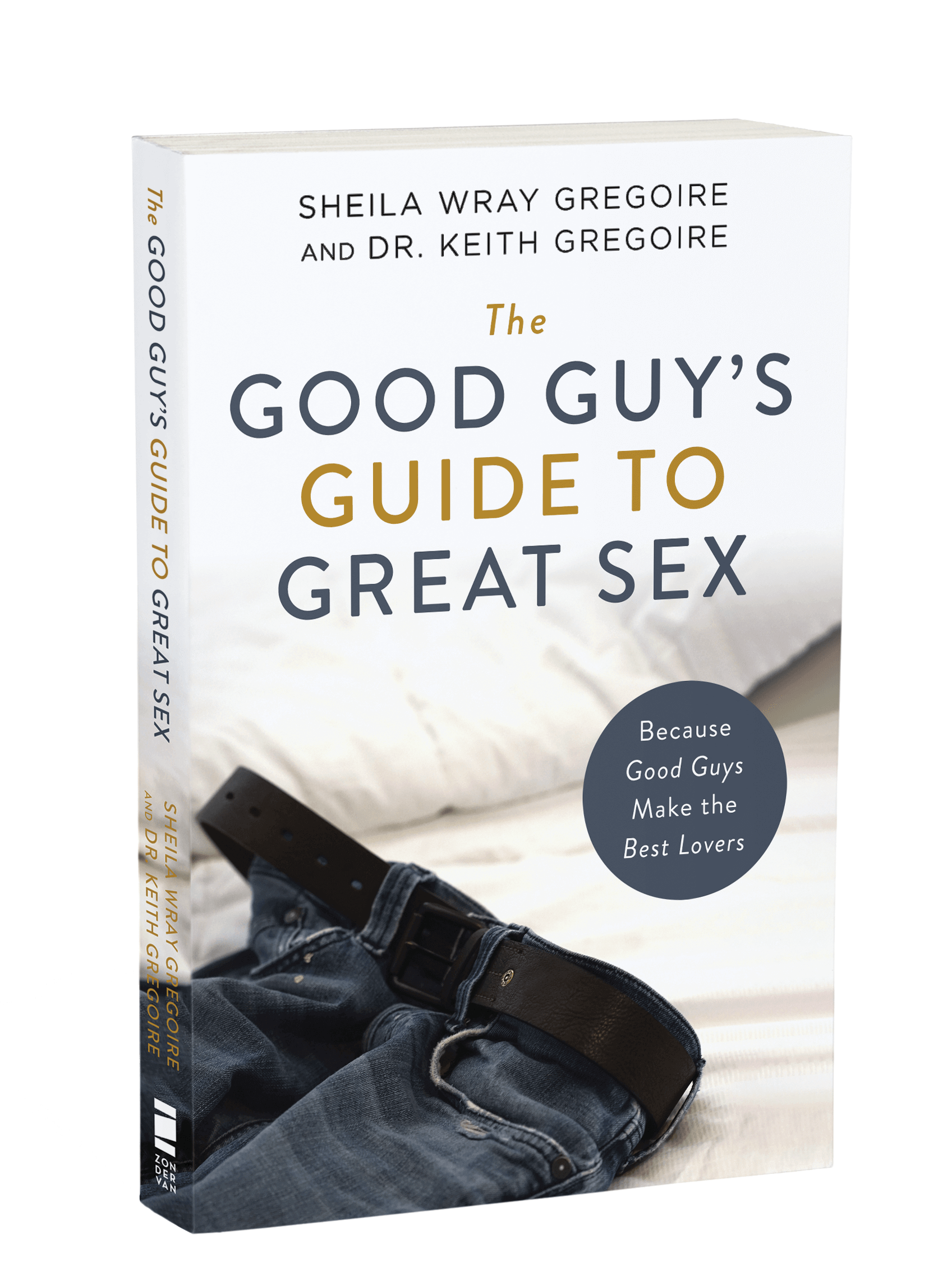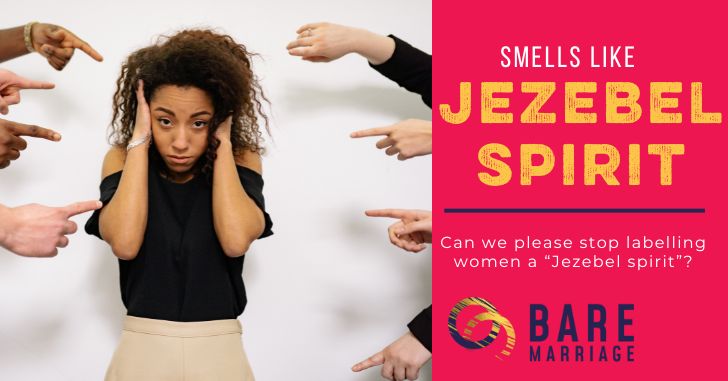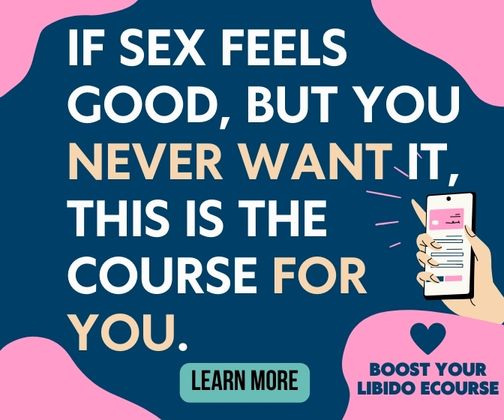So…have you ever heard the term “sexual response cycle”?
Basically what it means is that our bodies go through distinct stages during sexual arousal and response, leading up to orgasm and then resolving.
And many of us don’t understand what those stages are–which can make huge misunderstandings regarding sex more likely to occur.
Exhibit A: Emerson Eggerichs mixes up “turned on” and “aroused” with “willingness to not say no to sex”
If you remember from the podcast a few weeks ago where we dissected Emerson Eggerichs’ reply to a woman writing in saying she was crying in the shower before sex, I ended up spitting my tea when Connor told me that Eggerichs said it’s difficult to tell if a woman is aroused.
Eggerichs later said that the best way to turn a woman on is to not try to turn her on and not do sexual things, but instead vacuum. Women get aroused when you vacuum.
So he was using terms like “turn on” and “aroused”, but in the context he was using them, what he appeared to mean was “willing to let you have sex with her.”
There really was nothing at all about her actually wanting sex–except he said that the two days around ovulation she may respond differently.
This is the problem with our language around sex; we often use terms in the everyday vernacular, like “turned on” or “excited” or “aroused” interchangeably, and have no idea that terms can actually mean different things–and that we should understand sexual response as a progression.
In our new books The Good Guy’s Guide to Great Sex and The Good Girl’s Guide to Great Sex, we talk a lot about the sexual response cycle and why it matters.
And for our series on the “number of the day” this week, I’m going to declare that today’s number is:
That’s the number of stages in the sexual response cycle!
Here’s basically what it looks like (from The Good Guy’s Guide to Great Sex):

Now, we’ve put in more stages than some (often people leave out plateau and often people leave out desire) but we put them all in there because what you do to proceed along the sexual response cycle changes based on where you are in that cycle.
Here’s the key thing to remember and why this is important:
Our bodies reach orgasm by proceeding through that cycle, in order. You can’t skip a stage and end up at orgasm.
And so what we do in the book is go into great detail about what the different stages look like, and what you can do in each stage! But I’m going to drastically simplify it here.
I’m going to explain desire at the end, but let’s look at the other stages:
Excitement
What it looks like: You’re starting to get “turned on”. Men get erections; women start to get wet and the heartrate starts to increase (along with other changes).
What kind of activity helps move things along: Think affection with some sexy and teasing thrown in. Kissing, starting light and getting heavier. Nuzzling necks and ears. Running hands along arms and backs of legs.
Arousal
What it looks like: You’re really “turned on”! His erection is harder; her clitoris and nipples are erect and lubrication is going in full force.
What kind of activity helps move things along: Stimulation of the erogenous zones!
Plateau
What it looks like: You’re almost there and desperately wanting to reach orgasm. Her clitoris retracts against her body so it’s flat.
What kind of activity helps move things along: Consistency–more of the same. Same timing, same pressure. During the arousal phase you may mix things up and tease to have fun; at the plateau stage, it’s better to just keep going! (or, if you want to make sex last a lot longer, then keep switching things up).
Orgasm
What it looks like: Ejaculation for him; rhythmic waves of pleasure for her that coincide with vaginal contractions and other physical signs. Euphoria in both.
What kind of activity helps move things along: If she relaxes into it, she can often keep it going.
Resolution
What it looks like: Feeling sleepy and very relaxed and blissful. (if you feel sad or have a major crash at orgasm, you may have post-coital dysphoria. You can talk to a physician about this).
Now let’s throw desire into the sexual response cycle.
Desire is the mental component of sex where you mentally feel turned on and “I really want to have sex right now!” This can also be called libido.
Some people don’t put it as part of the sexual response cycle, but I think it’s important to understand where it fits, because some people feel desire BEFORE sexual activity starts (call them “spontaneous desire” people), and some people don’t really feel like they want sex until AFTER some excitement and kissing has begun (call them “responsive desire” people).
It’s easy for a spontaneous desire person married to a responsive desire person to feel as if the spouse never wants sex–when really they just kick in a little differently. And it’s easy for a responsive desire person to assume that they’re just not sexual.
But we measured this in our survey of women, and it doesn’t matter whether desire comes before or after excitement; as long as she is confident she’s going to get aroused once she starts sexual activity, then she finishes sex with the same blissful feelings. We need to stop labelling responsive desire people as less sexual. They just need more warming up; that’s all!
3 Quick Reasons It’s Important to Understand the Sexual Response Cycle
1. If a couple proceeds through the cycle at a different pace, it’s easy to think that the slower person isn’t interested in sex.
For guys, desire-excitement-arousal often look very similar and don’t seem very differentiated. It’s kind of a “more of the same” type of thing.
But for women, physiologically it actually is quite different. Guys, when they’re ready to have sex, are often ready to jump into the serious erogenous zone stuff. But she’s often not there yet.
This does not mean that she doesn’t want sex or that she isn’t sexual.
Women are actually capable of intense pleasure, and can have multiple orgasms on top of each other, something men can’t do. So let’s not assume she’s not sexual; let’s just realize she may be different.
2. The key to sexual response is listening to your bodies, not performing a checklist of sexual acts.
If you go straight for the clitoris (or vagina!) before she’s remotely aroused or lubricated (so even before excitement starts, for instance), it will feel like a Pap smear. It won’t be a pleasant experience. So when books tell you that the way to arouse a woman is to do X,Y and Z, you need to toss the books. The key instead is to do the types of things that your spouse enjoys at the appropriate stage.
Learn to pay attention to her body (because she’s usually the one who looks very different at each stage). Don’t think “kissing is affection” and “breast play is sexual” and so if you decide “we’re going to have sex” then we don’t really need to kiss, because we can go straight for the nipples. No! She does have to move through excitement and desire first (in whatever order).
3. You need to proceed with sexual activity at the timing of the person with the longest sexual response cycle.
Pay attention to that very last stage: resolution. What happens? You feel very peaceful, relaxed, and SLEEPY. That means that if he reaches orgasm first, it’s going to be more difficult for him to help her reach orgasm afterwards because everything in his body wants to go to sleep.
And if he’s obviously sleepy, she’s going to feel self-conscious and feel like she’s taking too long. So go through the cycle at the pace of the person who takes the longest, and things will work out much better!
Do you see how it’s important to not confuse “turned on” and “aroused” with desire?
And all of this explains why vacuuming can’t get her aroused! If arousal is the state where the clitoris is erect and the areolas are 25% larger and breathing is faster, vacuuming is just not going to do that (and I’m really trying not to picture anyone for whom it might).
And this is why I spit my tea.
Keith and I spend several chapters on the sexual arousal cycle and how to help her reach orgasm (it’s vastly expanded from the original Good Girl’s Guide to Great Sex), and we’re really trying to help couples bridge that 47 point orgasm gap!
I think you’ll really like the books. They build a healthy sex life from the ground up. And if you pre-order them now (they’re out March 15!), you can join our launch team and get access to the books right away, and get our preorder bonus!
The All New Guides to Great Sex!
Launch March 15!
Imagine building a great sex life–from the ground up!
What would it look like to build a picture of sex that was MUTUAL, INTIMATE, and PLEASURABLE FOR BOTH–with no harmful messages?
Welcome to the The Good Guy’s Guide to Great Sex and the ALL NEW Good Girl’s Guide to Great Sex.
Pre-Order Now! (Helps us out a ton)
And if you email your receipt, we’ll send you a special pre-order BONUS
So there you go: The sexual response cycle.
I hope some of you may have learned something new today! And maybe then we can start talking about this stuff a little more accurately.
(And heads up: We’re going to go over this in tomorrow’s podcast too!).

What do you think? Is this new for you? Do you think understanding this can make a difference? Let’s talk in the comments!
The Number of the Day Series
- How Many Men Think They Do Enough Foreplay Even if She Doesn’t Orgasm?
- How Many Elements are in the Sexual Response Cycle?
- What Percentage of Women Orgasm–but Don’t Have Close Marriages? (coming soon)
- How Many Men Are Upset about their Wives’ Lack of Adventure? (and what does that mean?) (coming soon)
- How Many Men Believe the Obligation Sex Message? (and what effect does this have on other areas of their marriage?) (coming soon)
- How Many Men Watch Porn? (And what are the effects?) (coming soon)
- Is Lust REALLY Every Man’s Battle? (coming soon)
- Can the Way We Do the Honeymoon Increase the Rate of Vaginismus? (coming soon)
Plus Pre-Order The Good Guy’s Guide to Great Sex and The Good Girl’s Guide to Great Sex (they launch March 15!)
Sheila Wray Gregoire
Founder of To Love, Honor and Vacuum
Related Posts
How The Great Sex Rescue Changed This Couple’s Sex Life
Everyday I get emails, comments, and DMs about how our books are changing lives. Before we wrote...
How Can the Higher Drive Spouse Avoid Giving the Obligation Sex Message?
Being the higher drive spouse can be really frustrating. You want to connect with your spouse, and...
10 Ways Men Can Initiate Sex with Their Wives (Without pressuring her)
How do you initiate sex with your wife without turning her off? We've been working through an...
What if Recovery from Obligation Sex Seems Impossible?
Obligation sex can wreak havoc on us. For last month we’ve been doing a deep dive into obligation...
Why Obligation Sex Wrecks Your Libido
Can feelings of sexual obligation affect your libido long-term? This month we're talking about...
Let’s Talk Emotional Labour of Birth Control
Every week I try to create awesome content for you all on the blog and the podcast–and even my...
PODCAST: Are We Saying Wives Don’t Have to Have Sex?
"So you think it's okay if women just don't have sex, then?" Whenever we talk about how sex should...
The 72-Hour Rule Isn’t a Thing: How Evangelicals Coerced Women into Sex Every 72 Hours
The 72 Hour Rule is Made Up by Evangelical Authors. Yep. This month on the blog we're "fact...















I love that you have two different diagrams for responsive vs spontaneous libido (and didn’t give them gendered labels)!
I think it’s worth mentioning (and maybe the book does) that people aren’t always one or the other. As a female, I find that I flip based on where I am in my hormonal cycle. Ironically, that might be the only thing EE got sort of, halfway, kinda right in the clips you guys dissected a few weeks ago. If, of course, you allow the assumption that stereotypically male, spontaneous libido is the only kind that counts… so, not all that right, really.
Yes, people do flip a lot! And I think mental load is a huge part of it too. I think if we split mental load, many, many women would flip from responsive to spontaneous!
That makes sense too. It’s way harder to find brain space to want sex if you not only don’t have testosterone and social conditioning pushing it to the forefront of your mind, but also have lots of other things crowding it out!
But I would hate for guys to think, “If I just assume some of the mental load, I’ll get sex out of it!”
They’ve been taught too much of that transactional nonsense already.
Better to see it as, “I should assume some of the mental load because I’m a full partner in this marriage and family.”
I agree, I’m not saying men should do housework to get sex. Just that the chronic stress of unbalanced mental load (or chronic stress from anything, really) would tend to make anyone’s libido less spontaneous.
Ah yes the R/Niceguy and R/Nicegirl approach to romance.
Never take first aid lessons from someone who says “It’s impossible to know if a person is breathing.” Lesson learned!
Pretty much!
Imagine the reverse. A female equivalent of Eggerichs not understanding erections
It’s great to finally acknowledge that there are different ways to start!
But aren’t these the two options of progression actually only for MEN?
To properly capture a woman’s sexual experience, we need arrows that exit the “orgasm” circle and turn right back into the “orgasm” circle as well as into the “plateau” and even “arousal” circles, since the clitoris isn’t “one and done” like the penis. 😊😊😊
I suppose that could be a third option, because many (most, who knows?) are one and done.
I love love love that you posted the differences in arousal cycles!!! I love this! It’s so true, and if couples can realize this…it will HELP! Bless, I hope couples begin to understand this!!!
Also, women, bcp can KILL your libido/want to! I had to go back on it for a few months…and I had ZERO want to! None! Now, I could enjoy sex while it was happening AND have orgasms…but there was zero want to. And little excitement. I can’t even explain how ridiculous it was. And to realize that that was prolly the reason I felt eh for the yrs I was on bcp. Sigh.
And for peri-menopausal women…the lack of libido is so so often because our bodies are estrogen dominant! When we add progesterone, and get back into balance…wowza! 😍😍 Also…a HUUUUGE amount of our perimenopausal symptoms are symptoms of estrogen dominance!!!! (I daily take vitex and DIM, bought on amazon, to balance the estrogen. And my pms and perimenopausal symptoms have tanked…while my desire has skyrocketed! It took a few months to get there…but it’s been WORTH IT!!!
I’ve been taking those supplements too for years. My libido barely registers on the scale. 😒
> > Women get aroused when you vacuum.
I think that Sheila once called this “choreplay”, and the evidence is that it’s not all that effective.
If vacuuming aroused women, I’m not sure my poor husband could have kept up with me. He had to vacuum for 5 months while my shoulder healed. 😀 Seriously, though—thank you for writing about this. My husband and I thought I had no sexual desire (wrong teachings from the church didn’t help) but it really was that I need the excitement first and then comes the desire. For WAY too many years, I thought I was broken. Your teachings have helped me so much!
That diagram is so helpful, especially the part about keeping things the same when you plateau. It explains why sometimes, everything’s going great and then it all fizzles out.
Agree with those who say that the stages can swap round depending on cycle. Mostly, we’ve got to put a bit of work in before desire turns up – but a couple of days a month and it’s practically moved in as a houseguest!
Is it weird that i am sort of excited at the prospects of the next few posts and discussing them? Especially the effects of porn.
Nope, excited too! All of them really, but yes that topic particularly!
This was a helpful post. I fall in the responsive category these days, and I wish my spouse would be willing to split up that cycle between 2 days, or else do more before bed to foster a sense of care and closeness. We have a co-sleeping baby, and if we snuggle more than 5 or 10 minutes he starts telling me if we don’t do it now the baby will wake up and then it will never happen. So I usually just do my duty so he can sleep and not be crabby. Sometimes I try to get aroused, but more often I’m so irritated at being asked repeatedly “Do you want to have sex?” from the moment I enter the bedroom and being told to hurry that I don’t care if have any pleasure. To his credit, he wants me to feel desire and to experience pleasure. But being asked that question night after night just turns me off, and after doing all the parenting every night to get 6 kids to bed means when I finally put my head on the pillow I’m not feeling excited about sex. It usually takes me ten minutes to cool my jets and dissipate the anger I feel most days. I think I would feel closer and respond faster if we had more physical contact that did not have to end in sex. But if I cozy up in bed, then he thinks I must want sex and pushes for it. So I mostly avoid snuggling. Because I don’t like the pressure of it always having to end in sex.
What if there are never or hardly ever vaginal spasms?
I think the big thing is whether you feel relaxed and sleepy afterwards, and whether you felt good. The rest of it varies by person, but the hormonal releases and the pleasure should be there!
There could be a whole month’s series on “listening to your bodies” from point two. It reminds me of the conversation in The Disease That Must Be Named podcast. If you have spent your life not listening to not only your body but your instincts (!) and even actively shutting them down…it can take a lot of work to learn exactly how to listen to your body.
This is so true! We talk about this a lot in The new Good Girl’s Guide to Great Sex. And in the orgasm course! it can be so tricky.
So if we’re not turned on AND we’re pretty sure we won’t get there, it’s kind of a self fulfilling prophecy? I honestly just want to cry every time I think about it. He so badly wants me to orgasm. But I can’t get there, and I have to keep trying because he wants this so badly “for me.”
Yes, it can certainly become a self-fulfilling prophecy! I’m so sorry, Anon.
But that’s why in our orgasm course we talk about how the aim at first is not orgasm at all but simply arousal. Let’s just figure out how to help you experience pleasure, and figure out what’s holding you back. And it could be any number of things! But I think if you’re having that much difficulty, stop trying to orgasm, and go way back to the basics and simply try to feel some excitement and arousal.
This could be the most life-changing, sex-positive post and podcast I’ve ever listened to on sex. Wow. Thank you!!!!
In these past months, the journey from “the woman crying in the shower” (which resonated), to Keith’s strong response (really loved hearing the man’s perspective), to the woman’s astonishing story and interview (which resonated even more strongly, and BTW fab job Sheila), and now this…
I have astonishing insights into how abusive and coercive my marriage actually was, and why it was perhaps doomed from the start (there was a copy of “Love and Respect” on his nightstand) .
I cannot thank you enough for your work. It’s bringing healing and hope for me.
I’m so glad, elf! That’s wonderful to hear!